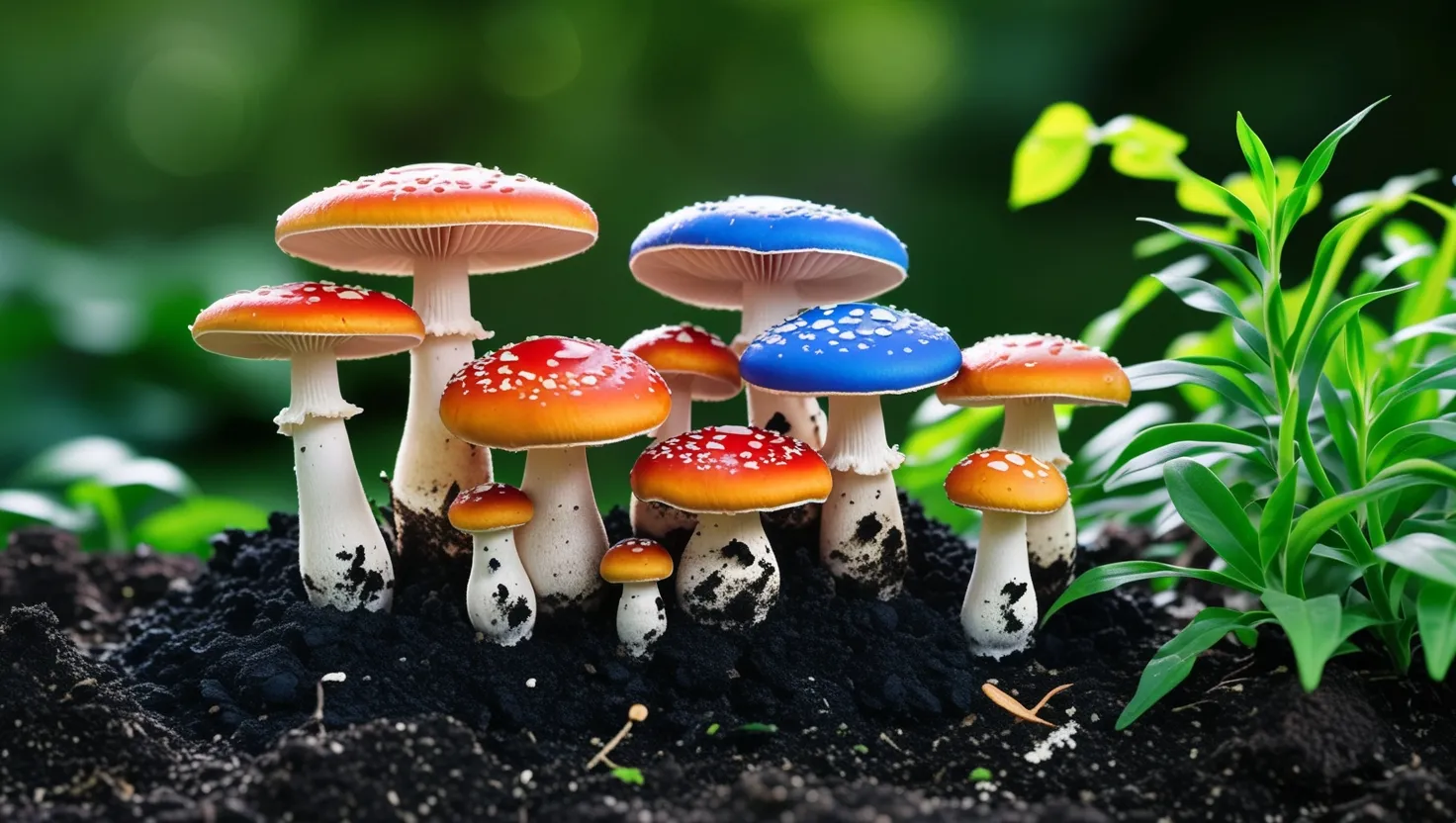In the quest to clean up our increasingly polluted planet, scientists and environmentalists are turning to an unexpected ally: fungi. Mycoremediation, the process of using fungi to detoxify contaminated environments, is emerging as a powerful and sustainable solution for tackling some of the world’s most pressing environmental issues.
Fungi, particularly the mycelium – the vegetative part of the fungus – have a remarkable ability to thrive in environments where other organisms would struggle to survive. This mycelium, a network of underground, web-like threads called hyphae, is incredibly resilient, being both fire-resistant and water-retardant. As it grows, it releases enzymes that break down complex pollutants, transforming them into harmless byproducts.
One of the most promising applications of mycoremediation is in soil remediation. Contaminated soils, often laden with heavy metals, pesticides, and hydrocarbons, can be cleaned up by fungi that immobilize and break down these toxins. For instance, decomposer fungi like oyster mushrooms can “eat” organic contaminants such as diesel, using their enzymatic processes to convert these pollutants into non-toxic forms. This not only restores the health and fertility of the soil but also makes it safe for agricultural use, reducing the risk of toxic substances entering the food chain.
Water remediation is another area where fungi are making a significant impact. Certain species of mushrooms can be applied to clean up water bodies contaminated with industrial runoff, oil spills, and agricultural chemicals. The mycelium absorbs and transforms these contaminants, improving water quality and supporting the health of aquatic ecosystems. In post-wildfire scenarios, for example, fungi-packed wattles can be strategically placed to intercept and filter out chemicals in runoff water, preventing further contamination of waterways.
Mycoremediation is also being explored for its potential in cleaning up industrial waste. Fungi can break down organic compounds and bind heavy metals, reducing the toxicity of industrial waste. This method is particularly appealing because it is cost-effective and can be performed in situ, eliminating the need for soil excavation and the subsequent disposal of contaminated soil.
Brownfields, abandoned industrial sites contaminated with hazardous substances, are another target for mycoremediation. By detoxifying the soil, fungi make these areas suitable for redevelopment, reducing the risk to surrounding ecosystems. In Los Angeles, for instance, researchers have conducted field studies using native plants and fungi to clean up brownfields, with promising results showing significant reductions in soil metal concentrations.
The aftermath of environmental disasters, such as oil spills and wildfires, presents a critical opportunity for mycoremediation. After the devastating wildfires in Sonoma County, a coalition of experts and activists used oyster mushroom spores to clean up toxic charred debris. By inoculating straw wattles with these spores, they created makeshift channels that diverted runoff away from threatened waterways, allowing the mushrooms to absorb and break down toxins in the runoff water.
In addition to these applications, mycoremediation is showing promise in managing agricultural waste. Fungi can accelerate the composting process by breaking down organic matter, improving soil fertility and reducing the need for synthetic fertilizers. This approach not only enhances soil health but also supports sustainable agricultural practices.
One of the more innovative aspects of mycoremediation is its potential to degrade plastic waste. Certain species of fungi are being “trained” in labs to digest waste like polypropylene face masks and plastic gloves. Companies like Mycocycle are experimenting with bioreactors where fungi can break down materials in a controlled environment, producing bio-based byproducts that can be reused in compost or converted into building materials.
The role of mycorrhizal fungi in mycoremediation is also noteworthy. These fungi form symbiotic relationships with plant roots, trading nutrients and water. By enhancing plant survival in polluted soils, mycorrhizal fungi can improve phytoremediation success, helping plants accumulate metals like lead and arsenic, which can then be safely removed.
Mycoremediation is not just about localized cleanup; it plays a significant role in restoring entire ecosystems. By remediating contaminated areas, fungi create a more favorable environment for other plant and animal species to reestablish themselves. This supports the recovery of native species and contributes to the overall biodiversity of the ecosystem.
Despite its potential, mycoremediation is still a relatively new field, and further research is needed to support its widespread use. However, the evidence so far is promising. Mycoremediation offers a cost-effective, environmentally friendly alternative to traditional cleanup methods, which often involve expensive and invasive procedures.
As we look to the future, it’s clear that fungi could be a game-changer in environmental restoration. By harnessing their natural abilities, we can develop sustainable solutions for some of the world’s most pressing environmental challenges. Whether it’s cleaning up oil spills, degrading plastic waste, or restoring degraded ecosystems, mycoremediation stands as a testament to the power of nature in healing itself, if given the right tools and guidance.
In an era where environmental sustainability is more critical than ever, mycoremediation offers a beacon of hope. It reminds us that even in the most polluted and degraded environments, there is the potential for renewal and regeneration. As we continue to explore and develop this innovative approach, we may just find that the key to a cleaner, healthier planet lies in the humblest of organisms – the fungi.






